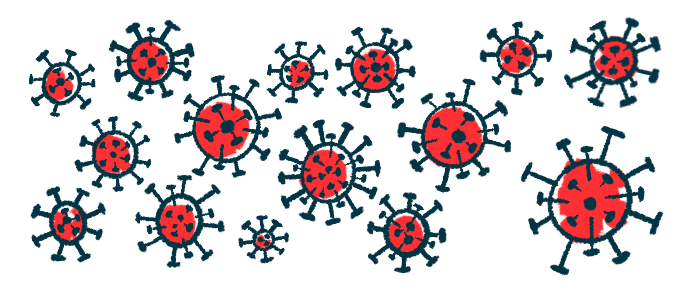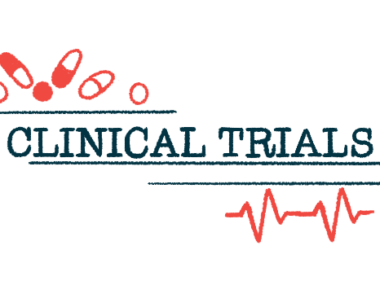Antiviral therapy eases hepatitis C, prevents complications: Study
Early screening, detection key to avoiding issues, researchers say
Written by |

Treatment with direct-acting antivirals (DAAs) reduces the disease burden associated with liver scarring (fibrosis) and prevents severe liver outcomes and death among people with chronic hepatitis C, according to a study in South Korea.
An important takeaway, the scientists said, is that there’s a critical need for efforts to promote early screening and treatment for hepatitis C virus (HCV) infections to prevent more serious issues later on.
“For individuals, early detection and effective treatment would mean fewer complications, better health outcomes, and enhanced quality of life,” Seungbong Han, PhD, one of the study’s senior authors and an associate professor at Korea University College of Medicine, said in a university press release. “Successful strategies could serve as models for other countries with high Hepatitis C prevalence, leading to global improvement in Hepatitis C management.”
The study, “Effect of direct-acting antivirals on disease burden of hepatitis C virus infection in South Korea in 2007–2021: a nationwide, multicentre, retrospective cohort study,” was published in eClinicalMedicine.
Hepatitis C is a liver infection by the HCV. HCV infections are a leading cause of chronic liver disease worldwide. In the short-term, the virus causes liver inflammation, or hepatitis, and if this doesn’t resolve, scar tissue starts to buildup. This fibrosis accumulation can ultimately give rise to a number of serious health problems, including irreversible liver scarring and damage, or cirrhosis, liver failure, liver cancer, and early death.
Benefits of antiviral therapy
Hepatitis C is treated with DAAs that work to stop the virus from being able to replicate and grow. They are highly effective at clearing HCV infections more than 90% of the time.
Accumulating evidence indicates that DAAs may also reduce the risk of poor long-term outcomes — including liver cancer, liver failure, and death — for chronically HCV-infected people.
The team of scientists in South Korea retrospectively analyzed the fibrosis burden and other liver-related outcomes among 11,725 chronic hepatitis C patients seen at 29 clinics across the country between January 2007 and February 2022.
They compared the outcomes of the 8,464 patients who received DAAs since their introduction in the country in December 2014 with those of the 3,261 patients who did not receive DAAs during the study’s 15-year period.
Results showed that 95.8% of patients given DAAs achieved viral clearance three months after completing the treatment. DAA treatment also significantly eased fibrosis, as assessed by three separate non-invasive measures: imaging-based liver stiffness, aspartate aminotransferase to platelet ratio index (APRI), and the Fibrosis-4 Index (FIB-4).
APRI is calculated based on blood levels of aspartate aminotransferase (AST), a marker of liver damage, and the number of platelets in the blood. FIB-4 is calculated through a formula that considers the patient’s age, blood levels of AST and alanine aminotransferase (another liver damage marker), and platelets counts. Platelets are the tiny blood cell fragments that promote blood clotting.
Follow-up shows differences between groups
Over a median follow-up of 27.5 months, or around 2.5 years, 469 people (4%) died, 586 (5%) developed liver cancer, and 580 (4.9%) developed decompensated cirrhosis, a condition in which liver function is deteriorating and a person is approaching liver failure.
Smaller proportions of patients underwent liver transplant (0.2%) or surgery to remove part of the liver (0.4%). A little over 10% of all patients met the composite outcome, defined as reaching any of these liver-related complications or death.
During follow-up, a significantly lower proportion of DAA-treated patients experienced these liver-related events than people in the untreated group, except for liver transplant and partial removal. Further analyses confirmed that DAA use was independently associated with a lower risk of liver cancer, liver decompensation, death, and the composite outcome.
Overall disease burden was assessed using a metric called disability-adjusted life years, or DALYs, which indicates the number of years in good health lost due to illness, injury, or death. This calculation accounts for factors including various liver fibrosis measures, cirrhosis, disease duration, and mortality.
In general, DAA treatment was associated with fewer DALYs when either the APRI or FIB-4 index was factored in, reflecting an overall lower disease burden with antiviral therapy. The greatest differences were observed in the subgroup of patients between the ages of 40 and 60.
Overall, “DAA treatment reduced the disease burden and improved clinical outcomes in patients with [chronic hepatitis C] in South Korea,” the researchers wrote.
They noted that while promising, the findings are limited by the reliance on non-invasive indicators of liver fibrosis, which might not perfectly reflect true fibrosis. Ultimately, a liver biopsy would be the gold standard way of evaluating the effects of DAAs on fibrosis.
The scientists said the findings highlight the need for public health campaigns to raise awareness about the importance of early HCV detection. “Our study can help improve public health, healthcare systems, and individual lives by encouraging the development of early intervention and effective treatment strategies for HCV infection,” Han said.








